Western Digital Caviar Green 2TB Review
Western Digital Caviar Green 2TB
Ever needed to store a few 100,000 photos on one hard drive? This could be right up your street.
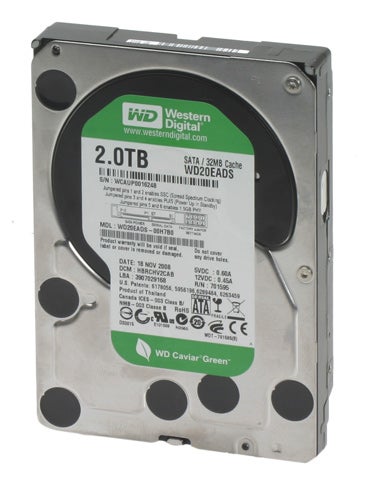
Verdict
Key Specifications
- Review Price: £206.99
It’s a sign of how fast the technology industry moves that no sooner had Hitachi broken unprecedented ground by releasing the first 1TB hard drive, people were already talking about who would be first to 2TB. Well, it actually took a little longer than some predicted but, almost 18 months later we have the answer. A round of applause please for Western Digital (WD)! 
Right, that’s the fanfare out the way, now let’s get down to seeing if this new drive is any good.
For those of you still a little unsure, 2TB (terabytes) is the same as 2,000GB (gigabytes). It’s the equivalent storage of nearly 450 DVDs or 40 dual layer Blu-ray discs and could accommodate roughly 500,000 MP3s, or 700,000 digital photos. In short, it’s more storage than most of us could ever conceive of needing. Unless, that is, you’re into video editing. In which case, you can never get enough.
There are, of course, countless other uses for large hard drives if you’re in the professional sector but for most home users, video’s about all you could need such a large disk for. Regardless, whatever your reasons for wanting a 2TB hard drive, this is your only option at the moment so let’s see how it fairs.
The Caviar 2TB heads up WD’s low-power, Green, line of drives and as such it won’t be competing for any performance medals. While this may seem a little odd, it actually makes perfect sense for a few reasons.
First, all high capacity drives end up having to compromise performance to a greater or lesser extent simply because faster hard drives require more robust hardware, which generally leaves less room for the data platters themselves. 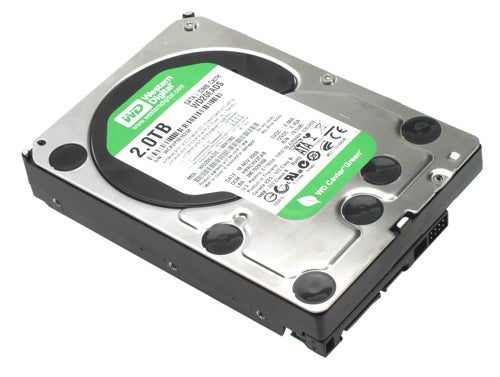
Secondly, although well tested, this is still brand new technology so it makes sense to reduce the risk of failure even further by ensuring the drive will be running in the coolest, quietest manner possible.
Thirdly, when you consider the applications such high capacity drives are likely to be used for, speed is generally not a key consideration. Corporate mass data storage, NAS appliances, secondary hard drives for storing all that home video, in nearly all these situations, the drive is only used occasionally and when it is used it’s not going to be the performance bottleneck, in which case it wants to be as low power as possible.
To get that power consumption down, Green drives use a number of incremental tweaks. To start with, the spindle speed is optimised on Green drives. A number of caching algorithms manage the way data is handled to ensure that the slower spindle speed doesn’t impact on performance too much. Further algorithms optimise seek operations to try and ensure the read/write heads move only as fast as they need to, which reduces power consumption and vibration. 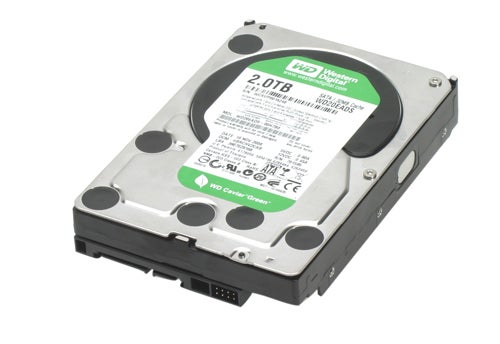
The other major addition is a low-power spin-up, which reduces peak power requirements when the drive is starting up. This means you can equip you computer with a lower power PSU, which in itself can further save power. All told WD claims these tweaks account for a 40 per cent reduction in power consumption compared to ”standard” desktop drives.
As well as its power saving features, WD has also used a new retention mechanism for the motor on this 2TB version. The main spindle is now fixed at both ends, which provides a more stable platform for the platters, further reducing vibrations and the resultant heat and noise.
Of course, looking at the drive, you’d be hard pushed to tell this is any different from any other hard drive, apart from the name. As with all current desktop hard drives, it comes in a 3.5in form factor with connections for SATA power and data. It uses the new SATA-II interface standard, with its theoretical transfer rate of 3Gb/s, but it’s compatible with the older 1.5Gb/s SATA standard as well.
Four platters are used to create the total storage of 2TBs. This equates to a record breaking data density of 500GB per platter, which WD was keen to point out would have performance as well as power saving benefits over five platter versions. While this is partially true, we found performance can vary depending on the sort of data you’re dealing with as evidenced when we compared the Seagate and Hitachi 1TB drives. Of course, the easy way to find out is to do some testing…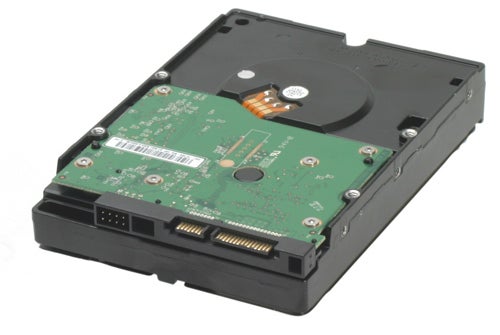
We ran this disk through our usual set of hard drive benchmarks. To start, we leave the drive unformatted and add it as a spare drive to our test rig. We then run the hard drive testing utility HDTune. This performs a thorough test of the drive’s performance right across the expanse of its 500GB platters. At the end it spews out an accurate access time figure as well as average, maximum, and minimum transfer rates. Both read and write tests are done so by the end of this test we have a pretty clear indication of how well this drive performs.
Following this we install an identical image of Windows onto the drive(s). We then test the boot, restart, and shut down times of the system. Following this we run the HDD portion of the PCMark Vantage test suite. This runs a whole host of simulated hard drive tests including Windows Vista booting, video editing using Windows Movie Maker, and importing music into Windows Media Player. At the end it returns an overall score but also breaks down the results into individual scores.
For comparison we had to rely on previously recorded results as we no longer have the drives in question. This is why we don’t have complete results for all the other drives. Nonetheless, we’ve compared to the Seagate Barracuda 7200.11 1TB, the Hitachi 7K1000 1TB, and, to show what a performance drive can do, the Western Digital VelociRaptor 300GB.
Starting with the HDTune results, it’s clear that despite the power saving enhancements, this drive still competes in terms of access time with both the Seagate and Hitachi 1TB drives and actually beats them on average transfer rate. We don’t have write results for these drives but, in isolation, the Western Digital 2TB Caviar Green seems just as accomplished when writing data as it does when reading.
In PCMark the WD 2TB Caviar Green again beats the Hitachi 1TB drive and in fact, in all our remaining tests, this 2TB, apparently low-power drive, beats the conventional 1TB drives from Seagate and Hitachi.
Unfortunately, testing the power draw of a hard drive is incredibly difficult to do because, when idling, the spindle motors switch off and the drive does nothing and when being worked hard, the power reading will jump around all over the place. The only way to properly test for power usage is thus to take a total energy consumption (Power x Time) reading while doing a number of tasks and judge from that. Sadly we don’t have the equipment to perform such a test so for the time being we’ll have to take WD’s word on the power saving figures. 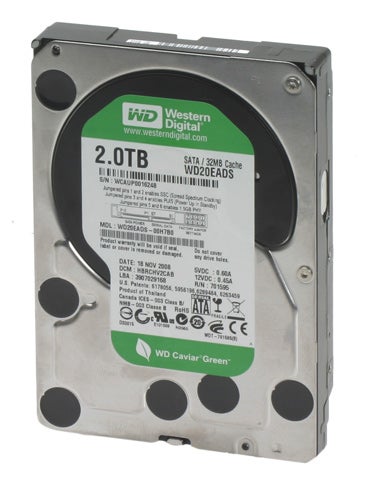
Of course, the most important thing for most people when they consider whether it’s worth investing in one of these drives is how much it costs. If it’s significantly cheaper to buy two 1TB drives then it’s a hard sell in most situations. Thankfully, then, Western Digital has kept the pricing sensible with this drive only just breaking the £200 mark, making it only about £30 more than buying two 1TB drives.
”’Verdict”’
Western Digital is first to the 2TB party and it has made an impressive entrance. While it’s no performance demon, the WD Caviar Green 2TB has all the power saving credentials that we now crave, is quiet, and is sensibly priced.
”’Read Tests”’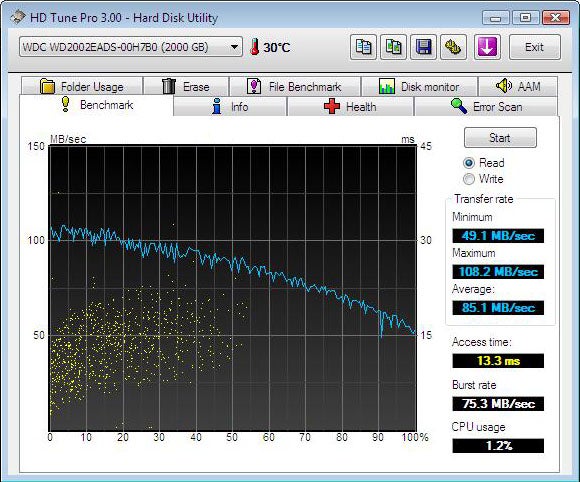
(centre)Western Digital Caviar Green 2TB(/centre)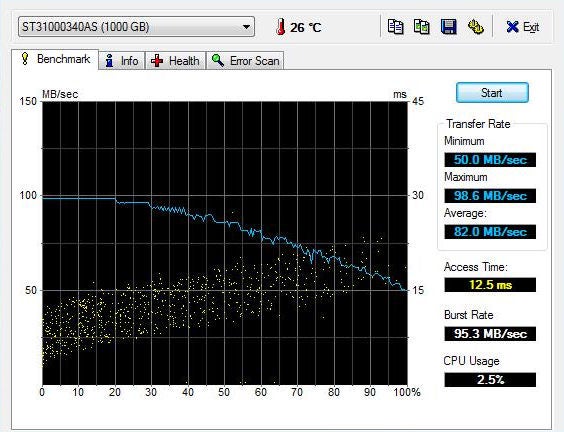
(centre)Seagate Barracuda 7200.11 1TB(/centre)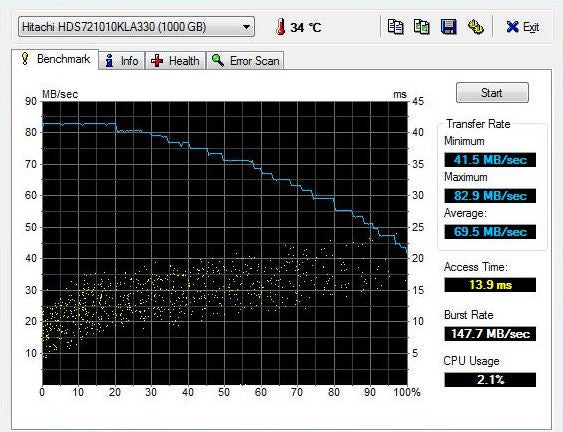
(centre)Hitachi Deskstar 7K1000(/centre)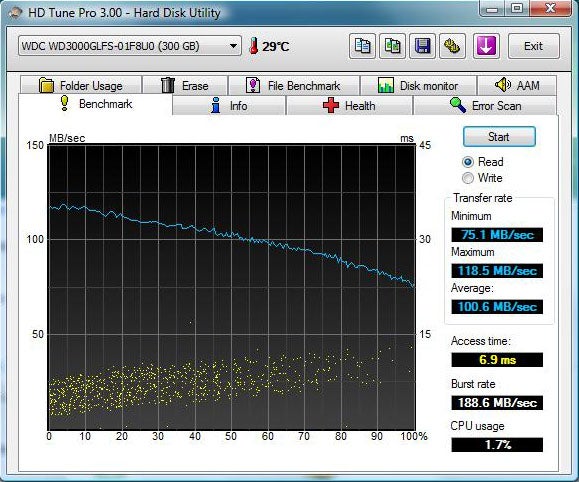
(centre)Western Digital VelociRaptor 300GB(/centre)
”’Write Tests”’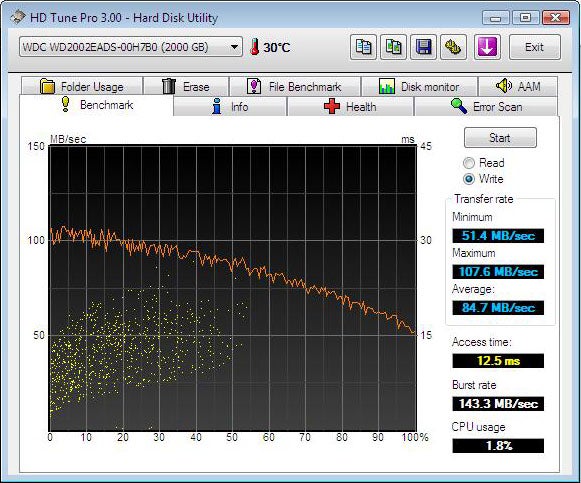
(centre)Western Digital Caviar Green 2TB(/centre)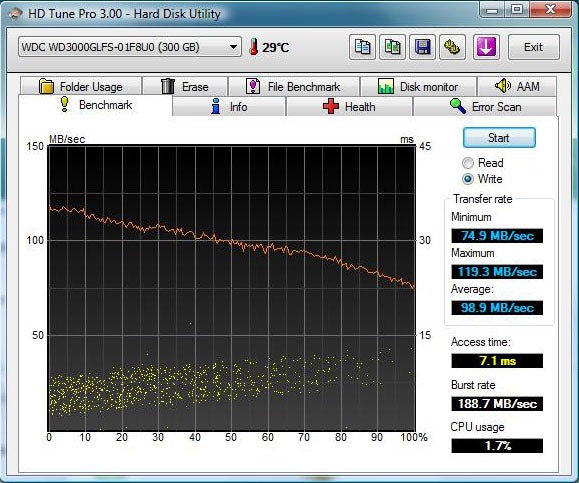
(centre)Western Digital VelociRaptor 300GB(/centre)
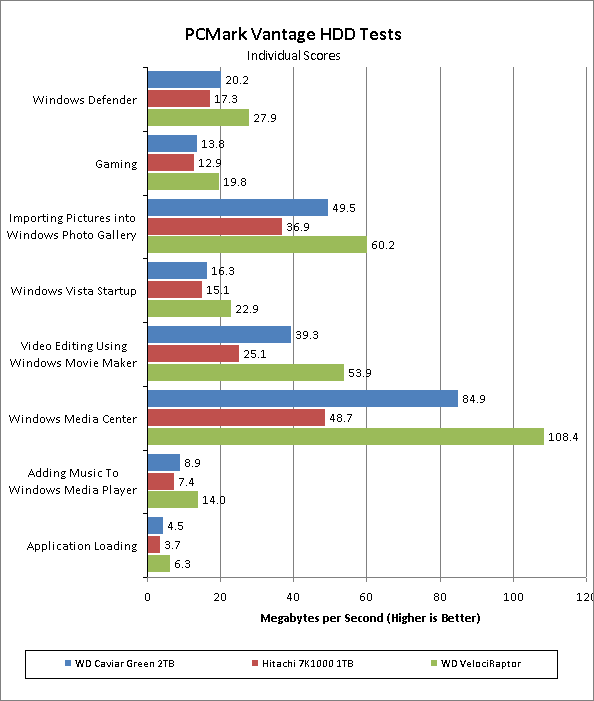
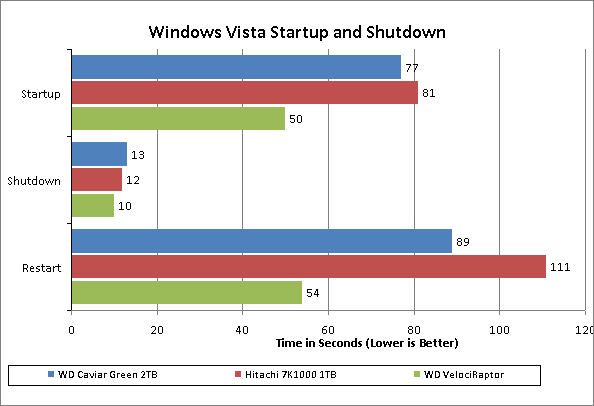
Trusted Score
Score in detail
-
Value 8
-
Features 8

